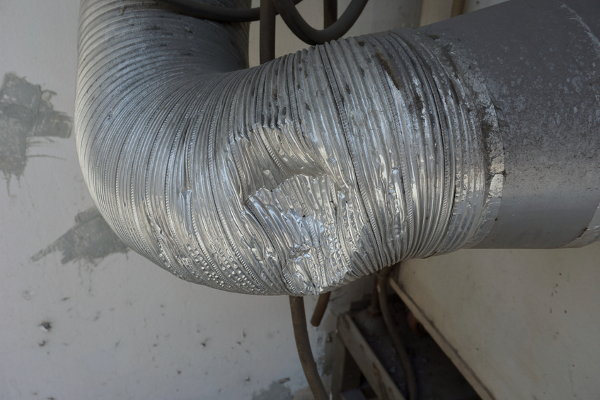HVAC systems work all year long to keep your home comfortable through various seasons, but they can encounter problems with their ductwork. Common issues include leaks, blockages, and loose connections. All of these can lead to inefficiency and discomfort, so it’s important to be aware of the issues and take steps to prevent them. Keep reading to learn more about common problems with HVAC ductwork.
Dirty Ductwork
Dirty air ducts are one of the most common problems with residential and commercial duct systems. This issue can lead to a variety of problems, from decreased airflow to reduced system efficiency, to air quality problems.
Dirt, dust, and other debris can accumulate on the inside of the ducts over time. This buildup restricts airflow, reducing the amount of air that can be delivered to the various rooms in the building. In addition, the increased resistance to airflow reduces the efficiency of the system, meaning it has to work harder to achieve the desired temperature.
The accumulation of dirt and dust can also lead to air quality problems, as it can be distributed into the air that is circulated throughout the building. This can be especially problematic for people with allergies or respiratory problems, as dust and debris can aggravate their condition.
Leaks
Leaks in HVAC ductwork are a common problem that can result in a loss of energy efficiency and an increase in energy bills. Heat pumps are designed to transfer heat from one location to another, and ductwork is used to move the air. When air is forced through the ducts, it has to be able to travel without any obstructions. If the ducts are not properly sealed, air can leak out, resulting in a loss of efficiency.
Leaks in ductwork can be caused by a variety of factors, such as improper installation, age, and wear and tear. Improper installation of ductwork is a common cause of air leaks, as it is difficult to ensure a proper seal between the joints of the ducts. As ductwork ages, it is also more susceptible to developing cracks and holes, which can contribute to an increase in air leakage. Wear-and-tear can also be a factor, as ducts can become damaged over time due to frequent movement or exposure to extreme temperatures.
Leaks in heat pump ductwork can have a variety of negative impacts, such as increased energy bills, decreased comfort, and health risks. When air escapes through a leak, it reduces the efficiency of the heat pump, resulting in an increase in energy bills. Given the rising costs of electricity, this could be a big concern for many homeowners.
Additionally, air leakage can cause uncomfortable drafts throughout the home. Leaks in the ducts can also allow pollutants such as dust and allergens to spread throughout the home, impacting indoor air quality. Finally, leaks can also lead to condensation buildup, which can cause mold and mildew growth, leading to health risks.
Poor Insulation

Poor insulation of ductwork is one of the most common problems encountered with duct systems. Poor insulation causes the air that is being distributed through the ducts to lose its temperature, resulting in a decrease in efficiency. This results in an increase in the energy costs associated with running the HVAC system, as well as a decrease in comfort for the occupants of the building. Poor insulation can also cause condensation to form on the ductwork, which can lead to the growth of mold and mildew. This is especially concerning in areas of high humidity. In addition to causing health concerns, poor insulation is also a major source of air leakage, resulting in a decrease in the overall efficiency of the system.
The most effective way to address poor insulation in ductwork is through proper installation and maintenance. Proper installation requires the use of an insulation material that is designed specifically for use with duct systems. The insulation must be installed correctly and sealed properly to ensure that it is effective.
Problems with ductwork can have a significant impact on the efficiency and operation of a home’s cooling and heating system. It is important to inspect and maintain ductwork regularly to ensure it is free of blockages, cracks, and leaks that can cause a decrease in airflow and efficiency.





